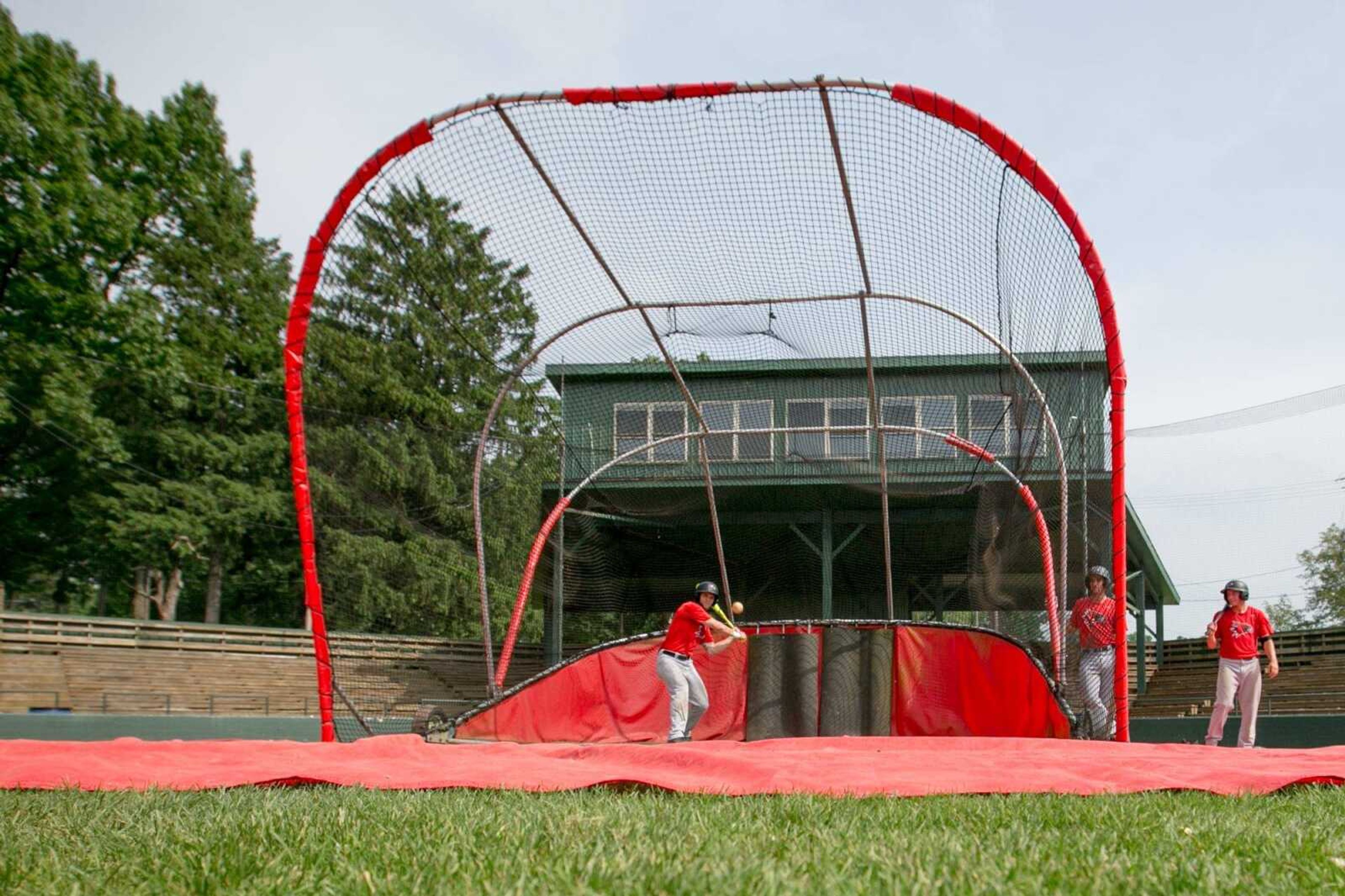Pitch recognition training proves beneficial for Southeast Missouri State baseball team
A "bang!" comes across the phone line from Dr. Peter Fadde, an associate professor of Learning Systems, Design & Technology at Southern Illinois University. The exclamation he uses to indicate the split-second of time that baseball players have to react when using one of his video training tools for pitch recognition sounds about like what he heard at Capaha Field when Southeast Missouri State's Chris Osborne blasted a three-run, walk-off home run earlier this season...
A "bang!" comes across the phone line from Dr. Peter Fadde, an associate professor of Learning Systems, Design & Technology at Southern Illinois University.
The exclamation he uses to indicate the split-second of time that baseball players have to react when using one of his video training tools for pitch recognition sounds about like what he heard at Capaha Field when Southeast Missouri State's Chris Osborne blasted a three-run, walk-off home run earlier this season.
Fitting, since it's Fadde's pitch recognition training concepts that have helped the two-time defending Ohio Valley Conference champion Redhawks increase their production at the plate during coach Steve Bieser's reign.
"Give somebody a fraction of a second more to decide whether they're going to swing and adjust their swing, that really is the core concept," Fadde said in a phone interview Tuesday. "They just did really great with incorporating it into a whole team approach, which had never been done before and, to tell you the truth, hasn't really been done since. People will borrow a little piece of this or piece of that, but SEMO still remains the team that has taken it and just made it a whole part of their approach."
------
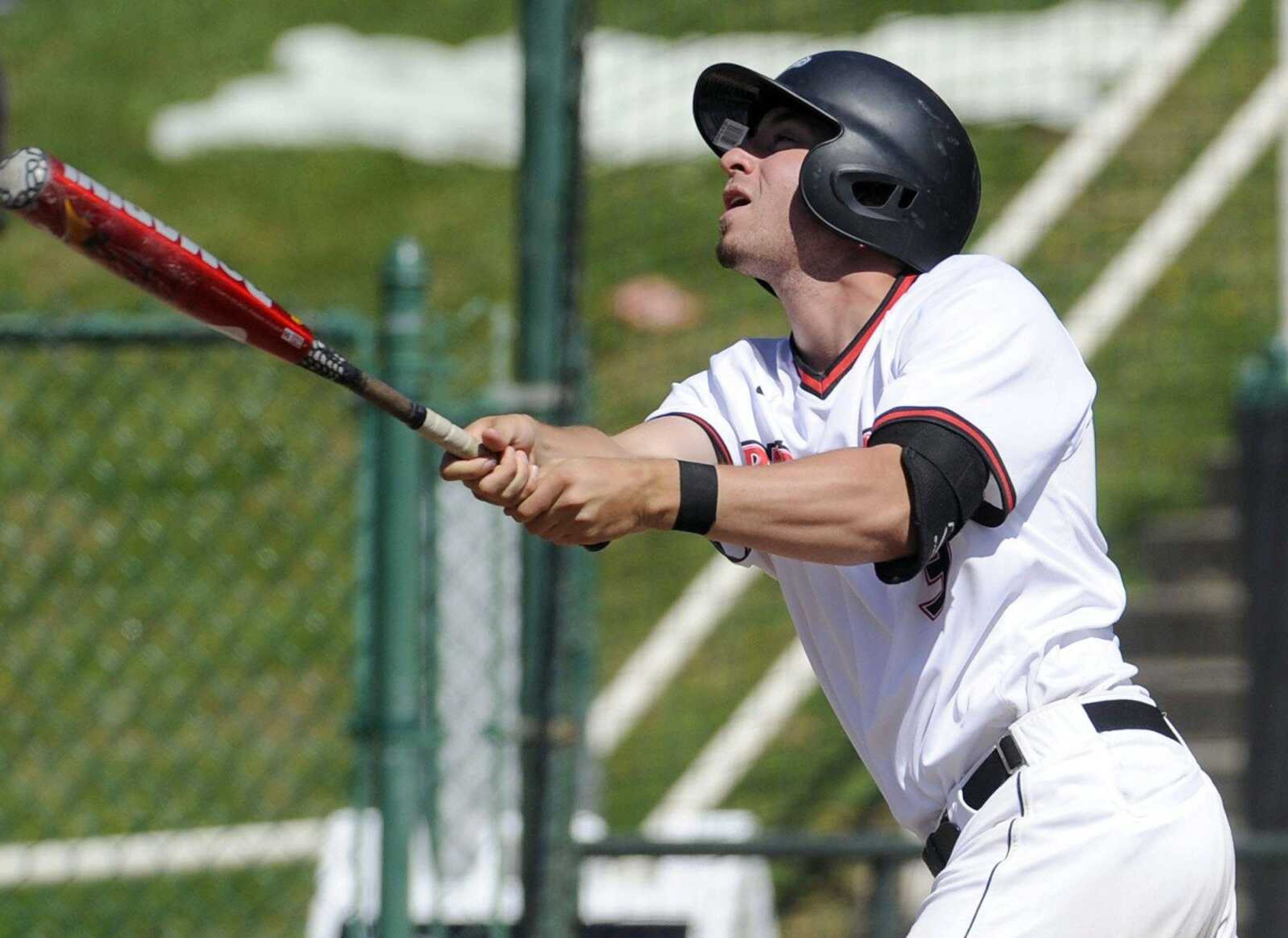
Before the 2014 season, Southeast hitting coach Dillon Lawson, who later left to take the same job with the Tri-City ValleyCats in the Houston Astros' minor-league system this past January, had scoured the Internet looking for ways to teach pitch recognition. He stumbled across Fadde, who just happened to be about an hour across the Mississippi River in Carbondale, Illinois, and who was looking for a place to put some of the principles of his research into effect.
Fadde credits Bieser and his staff's open-mindedness since "their livelihood depends on how well these guys hit baseballs," but the choice to implement and develop pitch recognition training methods, which includes working with video and adding components to everyday practice drills, wasn't a difficult one for Bieser.
"I think at our level we're always looking for some type of advantage," Bieser said. "How do we close that gap between the big schools and our players? And this was just another avenue to provide our players a chance to get better, and whether or not the entire team adopted it and used it or whether it helped one or two players on our team, I thought that it would be beneficial."
The numbers show that it has been advantageous for Southeast. The Redhawks ranked in the 70s and 80s in all of Division I baseball in offensive categories during Bieser's interim season in 2013.
In the last two seasons since starting the pitch recognition program, Southeast has ranked in the top 20 nationally in multiple offensive categories. The Redhawks were ninth in batting average and runs scored in 2014 and 12th and tied for fifth in those same categories, respectively, last season. They were sixth in slugging percentage and on-base percentage in 2015.
No other team in Division I baseball has scored as many runs as the Redhawks during the 2014 and 2015 seasons combined. Southeast's 881 runs tops Vanderbilt, which won the College World Series in 2014 and was the runner-up in 2015, and OVC foe Morehead State, which reached scored a combined 879 runs the previous two years.
Southeast (32-15, 21-6 OVC) is currently fifth in on-base percentage and tied for eighth in runs scored, and on the verge of winning its third consecutive OVC title, with the magic number at three wins to officially clinch.
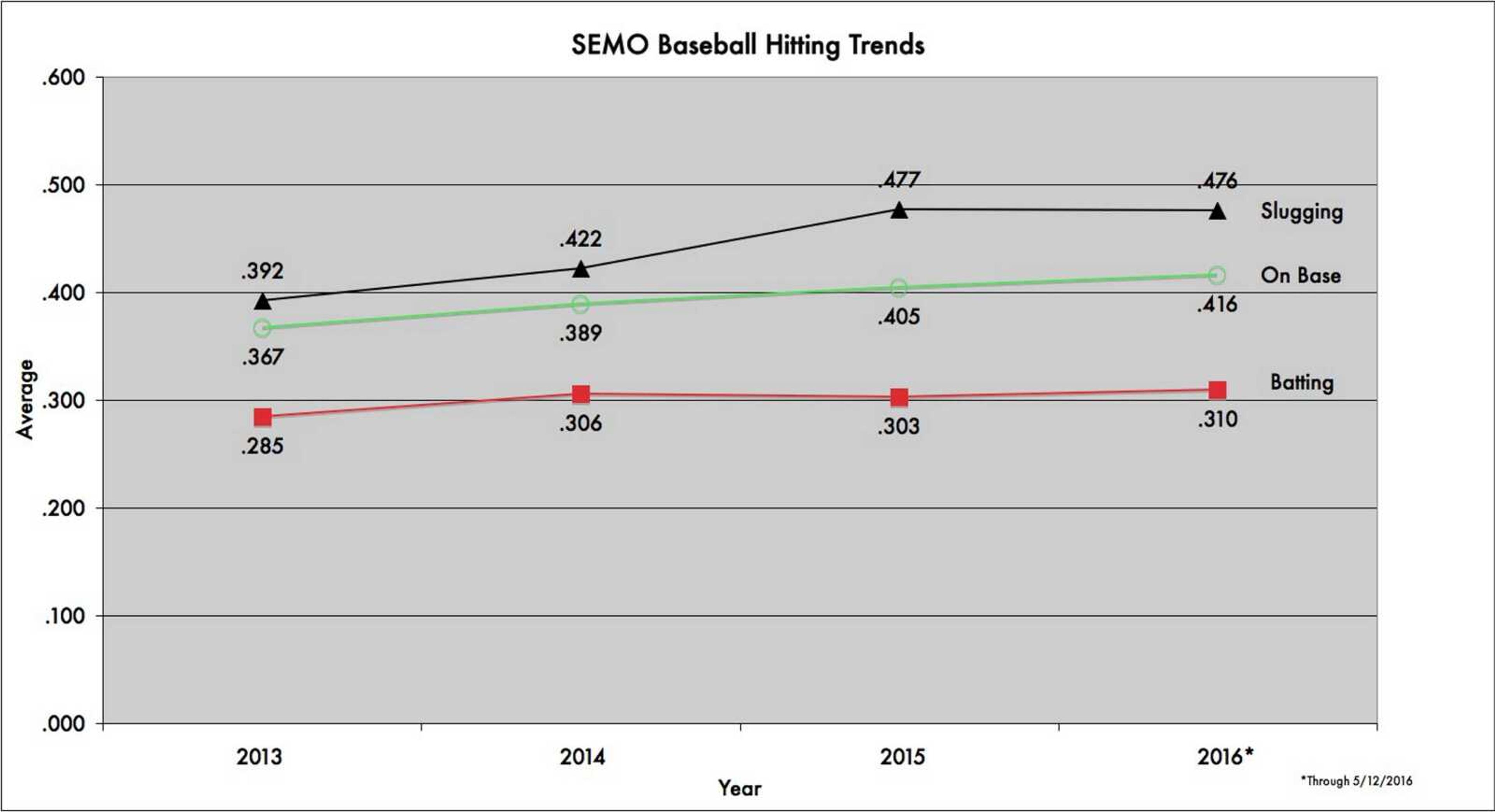
------
While completing his degree in the early 2000s, Fadde was working as a video coordinator with the athletics department at Purdue University, where his wife worked. When it came time to complete his dissertation, he began looking for ways that video was used to teach and came across research -- mostly regarding cricket, tennis and soccer goalkeeping, from researchers in Australia, Canada and the United Kingdom -- that intrigued him.
Studies about the seemingly "super-human" reaction times of athletes in these sports showed that success didn't stem from reaction times, but rather a player's ability to read cues from the opponent, and so "visual occlusion," was developed and used in testing.
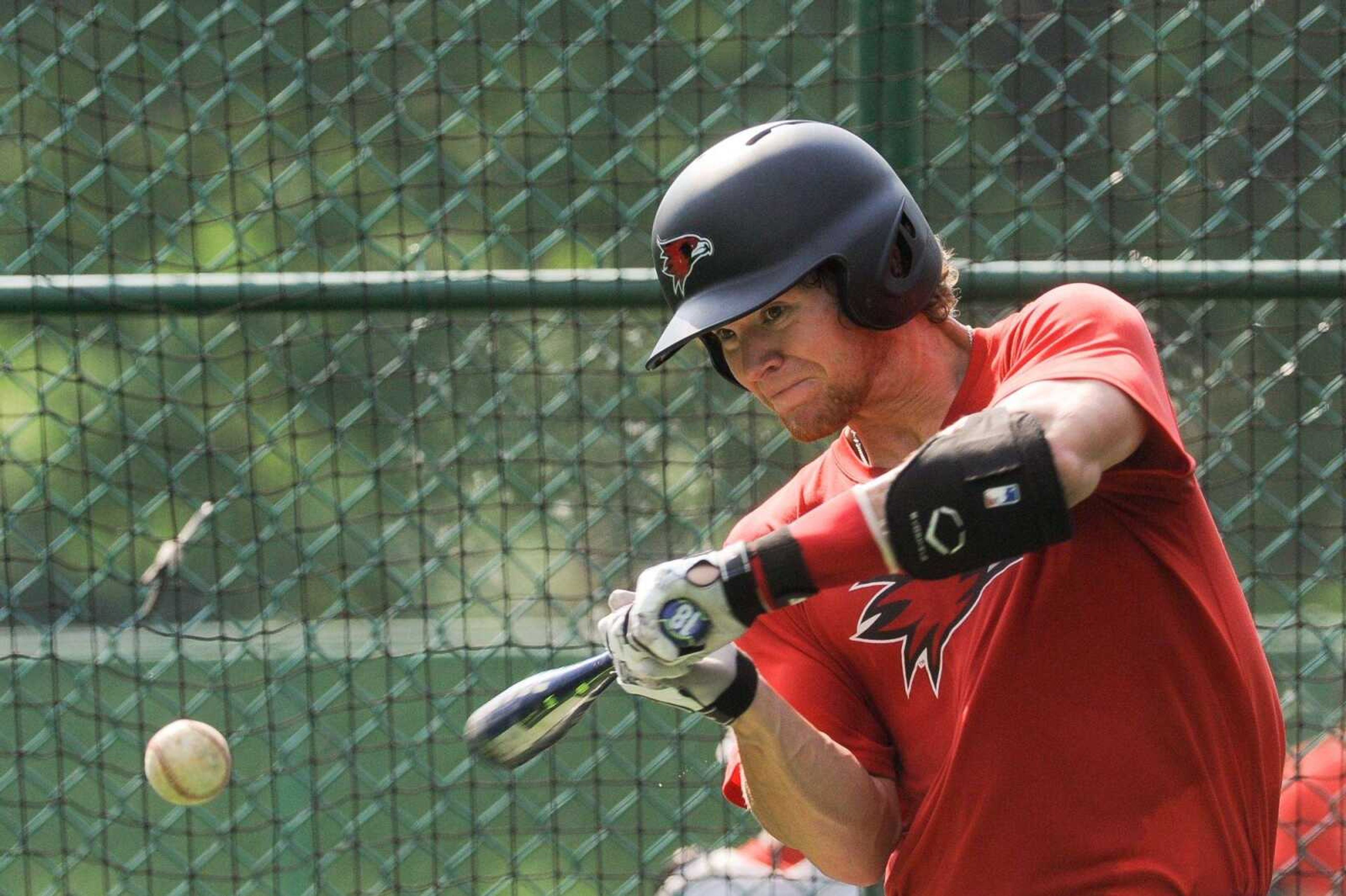
"You cut something off in order to make something else work harder," Fadde explained.
Groups of tennis players were split into two groups based on their experience level. Videos of a tennis serve were -- "bang!" -- cut off and flashed to a black screen at certain distances. Both groups could guess what type of serve was coming at them if it was cut off when it appeared closer to them, while it was just random chance if they guessed when it was cut off extremely early in the clip. But there was a point in between where the more experienced tennis players had a distinct advantage.
Fadde chose to use this video technique to improve that advantage for athletes. He worked with the Purdue baseball team for his dissertation research, using the cut-off videos of a pitcher throwing the ball to train half the team and then looking at batting statistics of the whole team.
The entire Redhawks squad now works with occlusion techniques.
"Right off the bat I was thinking, 'Man, I wish this was something that I had when I was playing,'" said current Southeast hitting coach Matt Borgschulte, who was a volunteer assistant at the time it was implemented.
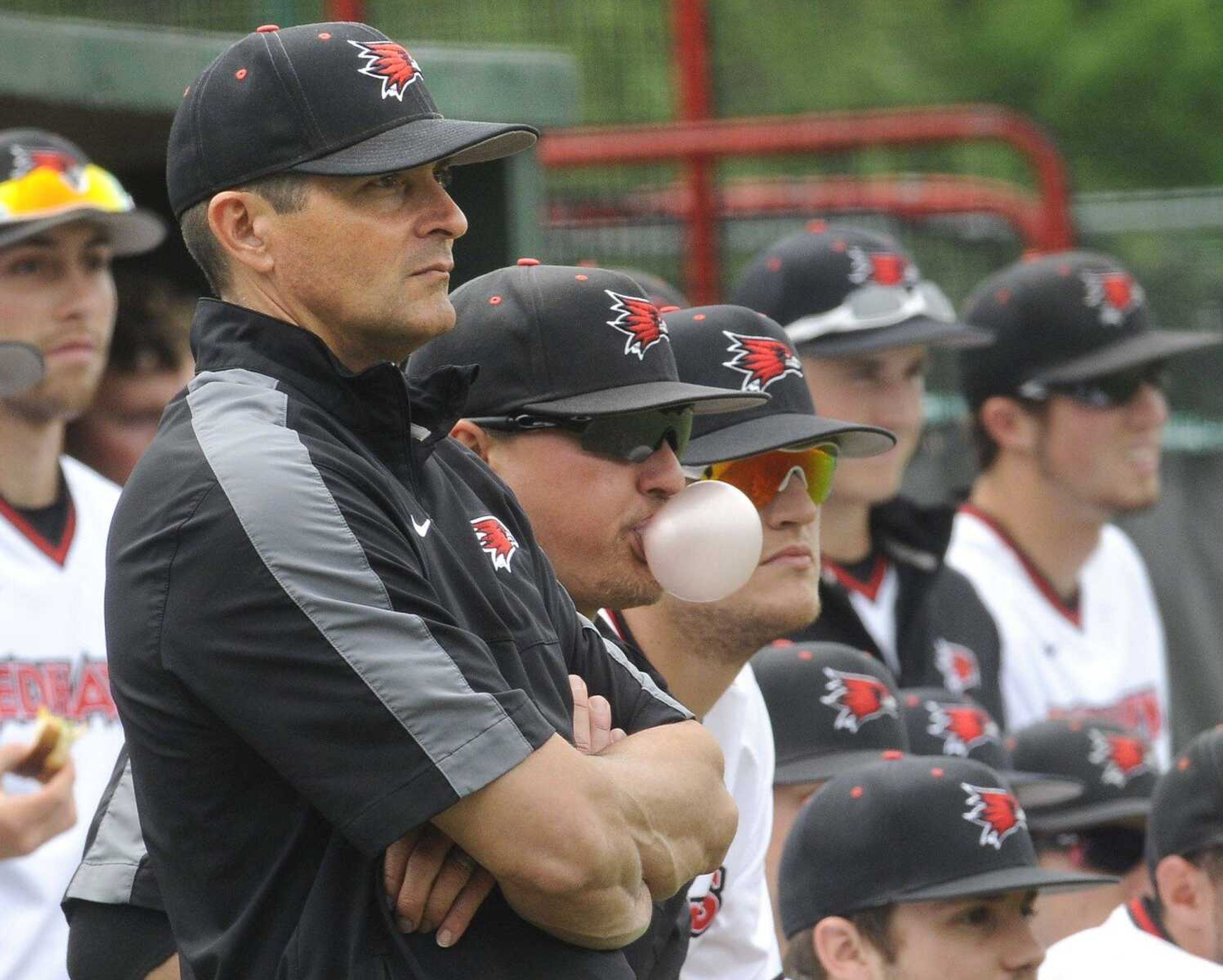
"Plate discipline is really important in baseball and I feel that it's something that's very undervalued when it comes to teaching hitting. Everybody talks about it but now we actually have put into place a system that can actually train it instead of just talking about, 'Don't swing at that. Swing at this.'"
The regiment started out as staring at a computer screen and judging pitches using the occlusion method, with players answering questions such as, "What type of pitch? Is it a ball or strike? Should I swing at it?."
The program has since evolved. This year the team has projected the video of a pitcher in Houck Field House in order to go through occlusion drills while hitting off a tee. The goal is to know before it gets further than 10 feet out of the pitcher's hand if it's a pitch to swing at or take. The entire clip is then shown, so the batter can have their correct answer immediately and can track the pitch.
Bieser wants his players to be aggressive to "their pitch" and work on their unique plans at the plate, which can change from game to game based on the opposing pitcher.
He said the time and manpower isn't available for the coaching staff to find film and cut it up for the players each week, but in the offseason they gathered video on some of the OVC's top pitchers so the players had access to that. Instead they use a lot of film of their own pitchers.
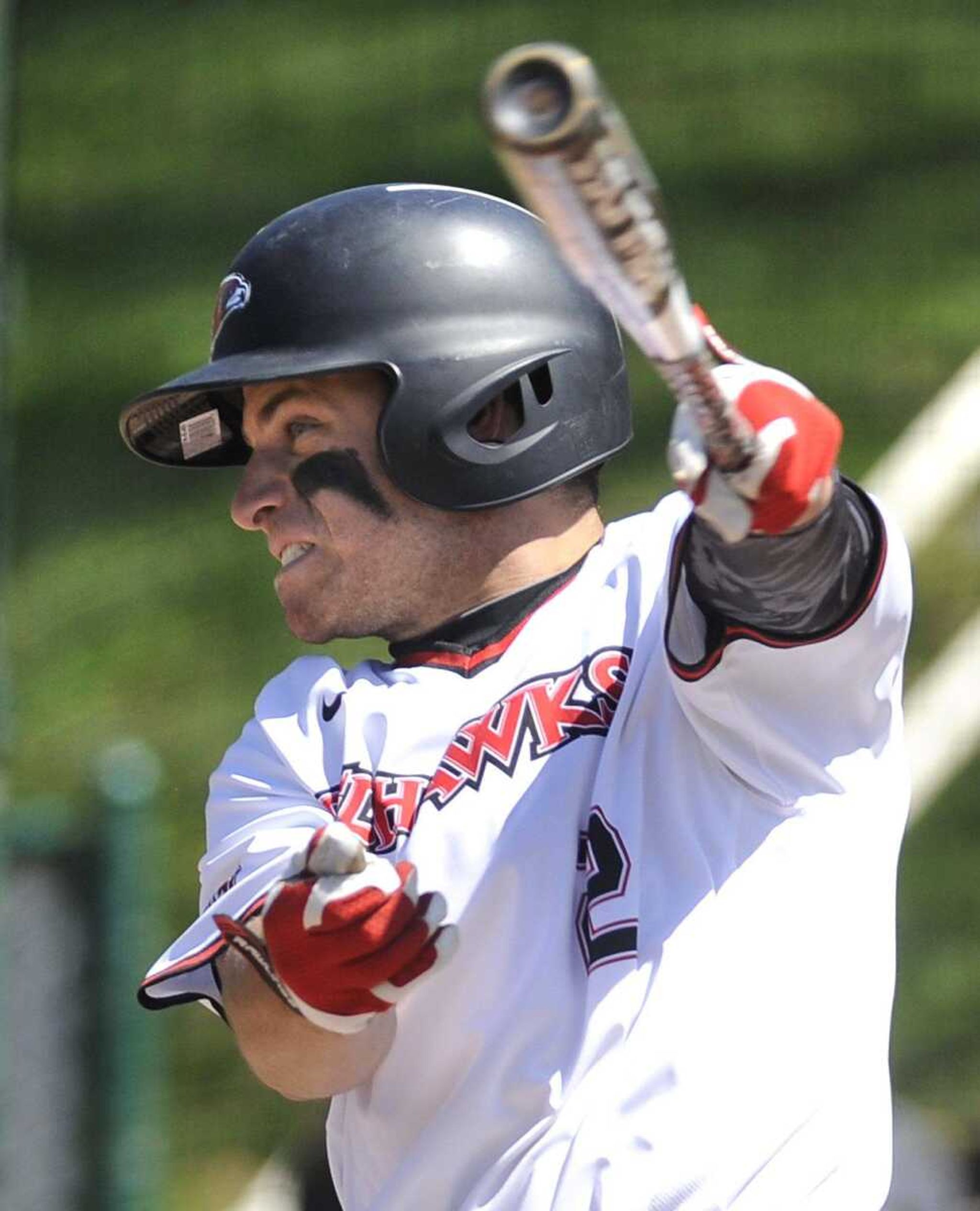
"We can take [Southeast left-handed pitcher] Joey Lucchesi and just flip him around and he can become a right-handed pitcher and the video allows us to do things like that," Bieser said. "There's a lot of things we can do with it. But it really doesn't matter what the face is because we're looking at his arm and looking for cues or looking for pre-pitch stuff; looking for cues to try to figure that out."
In turn, the Redhawks pitchers have benefited from the training methods. If position players watch video of a Southeast pitcher and notice a glove set in a different spot or a slower windup, they tip their teammate off to allow them to adjust accordingly.
Bieser said the team does stand-ins in early fall where the hitters have to call out the pitch as it's released, which is immediate feedback for the pitchers.
"It's been a double-edged sword for us," Bieser said. "It's helped us both offensively and from a pitching standpoint because our hitters are more cognizant of pitchers' cues and they can share that with our pitchers and eliminate that."
Players have to be willing to put the lessons into practice on the field, and those who benefit the most from the training are those known for their work ethic, like former players Cole Bieser and Jason Blum; Matt Tellor made the jump to being the OVC Player of the Year as a senior in 2014.
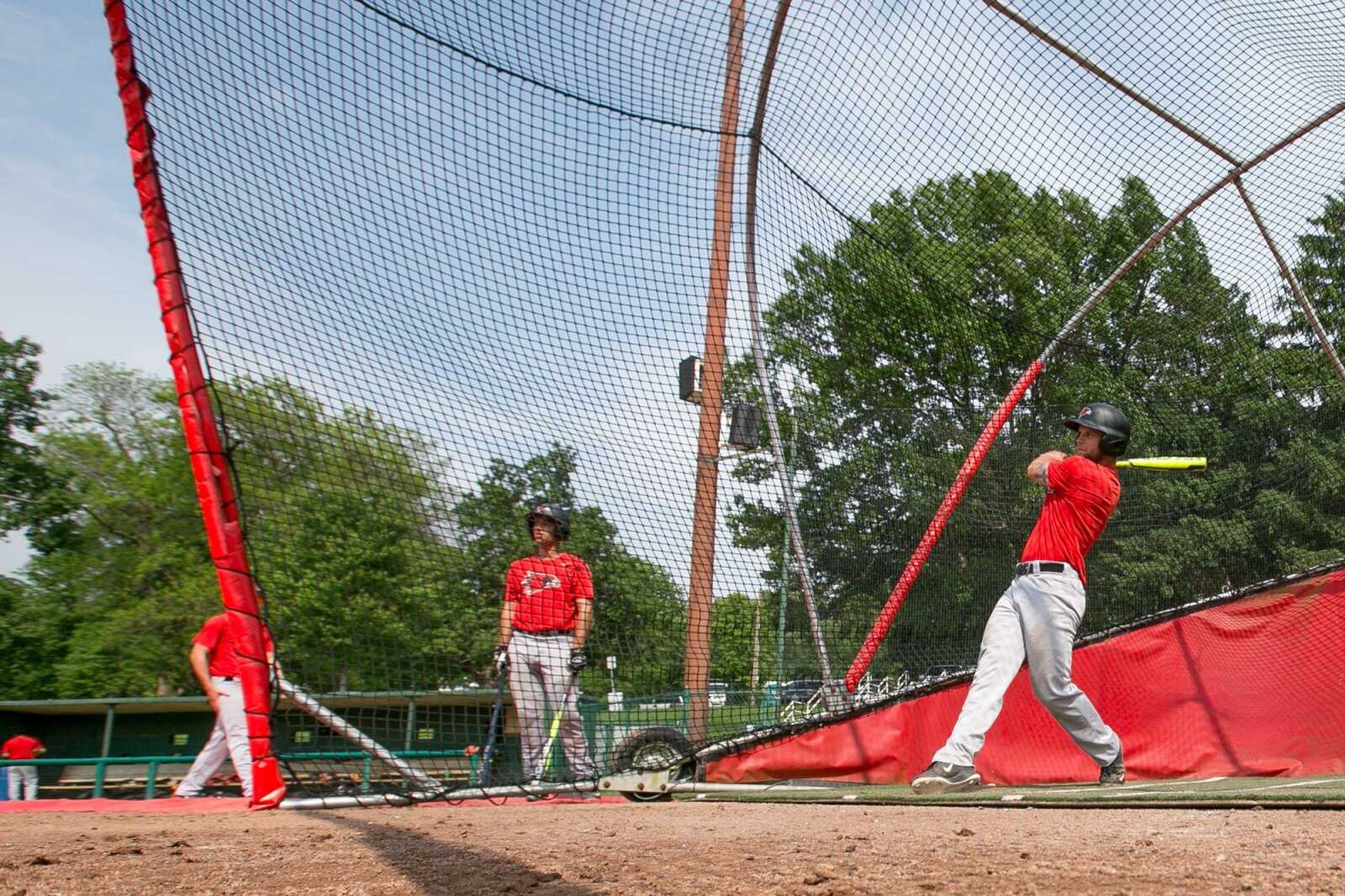
Former All-American outfielder/designated hitter Derek Gibson is the type of player that didn't get as much out of the program because he was just a "good ball striker," who could connect on pitches that weren't strikes, but it gave him a plan at the plate and led to an increased in power -- doubling his home-run total -- as it did for Tellor.
Senior shortstop Branden Boggetto spent a lot of time working the program between his sophomore and junior years with Lawson as well as sophomore second baseman Trevor Ezell, who's "wanting to do anything possible to make himself a better player," according to Bieser.
Video is available to the players almost non-stop. There's a computer set up in the locker room, players can watch if they good bored on a road trip and it's sent to them during school breaks. Bieser, who can track how many times it's been watched by particular players, has seen a correlation between views and increased success at the plate.
"What's great about it is that you can just watch it all the time," said Ezell, the Redhawks' leadoff hitter. "We use it over winter break, so in a way we're still seeing pitching even though we're not getting to hit live pitching at that time."
Ezell noted a drill called net occlusion, where a coach or player throws the ball into one net about 10 feet in front of them and a batter is behind another net hitting off a tee; they have to recognize the pitch and choose whether it's a pitch they're supposed to swing at or take. Repetitions like these make the players think, so in a game they shouldn't have to.
"System 1 is fast, it's unconscious -- that's what should be happening during a game," Bieser said. "But we always prepare in that System 2 where there's a thought process involved. It's very analytical, we're thinking about those things, and sometimes we take that System 2 into a game performance and that's when we start getting passive. Whenever we trust what we see and we attack how we should be attacking, that's when you see our offense really click."
Bieser and Lawson keep in contact and discuss different drills that their respective teams have tried, because Bieser knows there's untapped ways to tweak things to give his team an added edge.
"Rather than have these two guys stand over here and do this and maybe not get a whole lot out of it, what can we add from a pitch recognition standpoint to add what we call the 'sixth tool,' really?" Bieser said. "It's just the sixth tool of the hitting approach just to become a better hitter. I think it's definitely served us very well and we're still looking for ways to improvise and make things better and making things up as we go and trial and error a lot of the time, but it's something that's been really successful."
It's not that the program or its ideals are extraordinarily innovative, according to Fadde, it's that it has become the norm for Southeast baseball.
"Actually if somebody said, 'Wow. What's the secret of having this success?' That's it," Fadde said. "It became their routine stuff."
Connect with the Southeast Missourian Newsroom:
For corrections to this story or other insights for the editor, click here. To submit a letter to the editor, click here. To learn about the Southeast Missourian’s AI Policy, click here.

